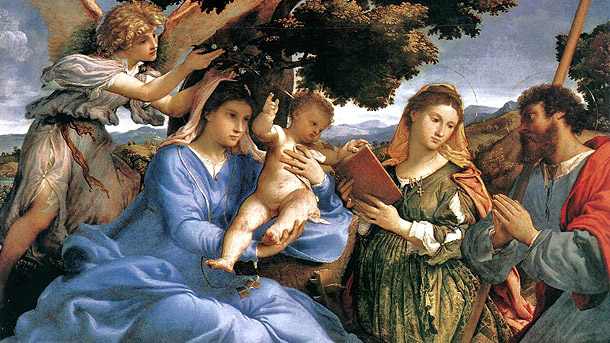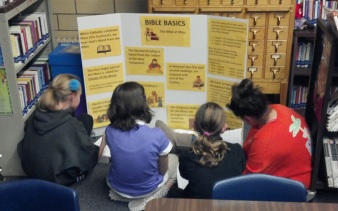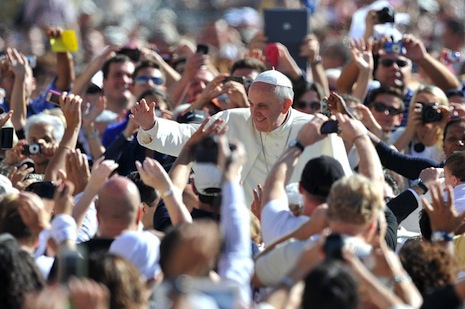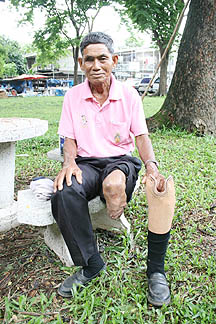Mary, the Rosary and the Word of the Lord

A Reflection on the Feast of Our Lady of the Rosary – October 7, 2013
The Word of God has power to touch the lives of ordinary people through solid piety, authentic devotion and attentiveness to the living Word. The Word of God deals with the living communities of faith who have handed down the message to us, a message that keeps alive our community of faith. For many people who do not have the luxury, privilege, money, time or perhaps desire to delve into serious Scripture studies, their only encounter with the Word of God might be through the liturgy or popular piety and devotion. And one beautiful way of encountering the Word of God is through the rosary.
Mary, “Mother of God’s Word” and “Mother of Faith”
our_lady_of_the_rosary_610From the Annunciation to Pentecost Mary appears as a woman completely open to the will of God. She is the Immaculate Conception, the one whom God made “full of grace” (cf. Lk 1:28) and unconditionally docile to his word (cf. Lk 1:38). Her obedient faith shapes her life at every moment before God’s plan. A Virgin ever attentive to God’s word, she lives completely attuned to that word; she treasures in her heart the events of her Son, piecing them together as if in a single mosaic (cf. Lk 2:19,51).
Mary is the image of the Church in attentive hearing of the word of God, which took flesh in her. Mary also symbolizes openness to God and others; an active listening which interiorizes and assimilates, one in which the word becomes a way of life.
Mary was very familiar with the word of God. This is clearly evident in the Magnificat. There we see in some sense how she identifies with the word, enters into it; in this marvelous canticle of faith, the Virgin sings the praises of the Lord in his own words: The Magnificat – a portrait, so to speak, of her soul – is entirely woven from threads of Holy Scripture, threads drawn from the word of God. Here we see how completely at home Mary is with the word of God, with ease she moves in and out of it. She speaks and thinks with the word of God; the word of God becomes her word, and her word issues from the word of God. Here we see how her thoughts are attuned to the thoughts of God, how her will is one with the will of God. Since Mary is completely imbued with the word of God, she is able to become the Mother of the Word Incarnate.
As we contemplate in the Mother of God a life totally shaped by the word, we realize that we too are called to enter into the mystery of faith, whereby Christ comes to dwell in our lives. Every Christian believer, Saint Ambrose reminds us, in some way interiorly conceives and gives birth to the word of God: even though there is only one Mother of Christ in the flesh, in the faith Christ is the progeny of us all. Thus, what took place for Mary can daily take place in each of us, in the hearing of the word and in the celebration of the sacraments.
Session Two – September 24, 2013: Mass and Bible Basics

Wow! I had to rush home from my VIRTUAL Pilgrimage to Italy to get ready for my class tonight! Thankfully, cyberspace was pretty clear so I made good time!
This evening will be my 2nd class with the 6th graders at St. Cajetan. One new feature that the parish is trying this year is to bring the young people to church once per month for Mass. This is a wonderful way to initiate young people into the liturgy and to build their love of the Eucharist. We purchased pew cards so that the young people can follow along with all of the Mass parts. I’ll be eager to see how the children behave in church…that’s always interesting!
Mass begins 15 minutes into class so I won’t have time to do much before we head to church but I do plan on having a “show and tell” about the faith symbols they brought in for our prayer center. It will also be interesting to see how many bring in their symbol!
When we get back from Mass, my guess is that we’ll have about 40 minutes left. We’ll do our prayer ritual and then it’s into BIBLE BASICS! I have 4 Learning Stations set up for my 6th graders and they will move from one to the other in groups of 3s, filling in worksheets with information about the following 4 topics:
Bible Basics Learning Station – How to Find Things in the Bible
Bible Basics Learning Station – Bible Timeline
Bible Basics Learning Station – How Catholics Understand the Bible
Bible Basics Learning Station – The Bible at Mass
The Learning Stations consist of Display Boards I created last year:
Here are the fill-in sheets the students will use…they will have 5-7 minutes at each of the 4 stations.
Bible Learning Stations fill in sheets – Bible Basics
Bible Learning Stations fill in sheets – Bible Basics – Answer Key
Because of Mass, I will not lead a guided reflection this evening. We will work on the Learning Stations right up until “closing time” before I gather them to send back home. For homework, I’m asking their parents to help them prioritize their goals for this year…this is the first time I’m trying this.
As always, you are free to use any of the materials above!
After class, I have to take a virtual red-eye flight back to Rome to meet up with my fellow pilgrims!
Al-Azhar Mosque and University, Cairo

Al-Azhar University in Cairo is one of the oldest operating universities in the world. The Islamic university is connected to the beautiful and historic Al-Azhar Mosque.
History
The mosque and university are named in honor of Fatima Az-Zahraa, the daughter of Muhammad, from whom the Fatimid Dynasty claimed descent.
The mosque was built in two years beginning in 971 AD. The school of theology (madrassa) connected with it was founded in 988 as an Ismaili Shia school, but it later became a Sunni school, which it remains to this day. It claims to be the oldest Islamic university in the world, but this is disputed by the Kairaouine Mosque in Fes, Morocco.
The core academic life of Al-Azhar has remained much the same for over a millenium: its students study the Qur’an and Islamic law in detail, along with logic, grammar, rhetoric, and how to calculate the lunar phases of the moon. Most of this learning is done by listening in a circle (halqa) at the feet of a sheikh and rote memorization. As students advance, they may engage in Socratic dialogue with their teachers or instruct their juniors.
Al-Azhar does not admit students who are not practicing Muslims but provides training in secular professions; it is thus a unique combination of a theological seminary and regular university, with faculties of medicine and engineering established in 1961.
Al-Azhar is considered by most Sunni Muslims to be the most prestigious school of Islamic law, and its scholars are seen as the highest scholars in the Muslim world. Its stated objectives remain the propagation of Islamic culture and the Arabic language.
To that end, it maintains a committee of ulemas to judge on individual Islamic questions, a printing establishment for printing the Qur’an, and trains preachers trained in da’wa and the propagation of religious publicity. Al-Azhar is run by a Supreme Council that establishes general policy, headed by a Grand Imam, styled the “Sheikh Al-Azhar.”
Since 1929 Al-Azhar has published a magazine (now monthly) whose stated purpose is to promulgate religious rules, subjects related to the propagating of Islamic literature, and basic jurisprudence (sharia), including sections on history, biographies, translated texts and news concerning the Muslim world.
The current Imam of Al-Azhar has declared that the perpetrators of the 9/11 attacks and suicide bombers are heretics who are not following the true path of Islam. In a recent conference in Indonesia, he asked all “true believers” to deny speakers of violently heretical Islam places to speak in the mosque, thus preventing the spread of violent ideologies.
What to See
The Al-Azhar Mosque is a grand structure that reflects many centuries of styles. Entrance is through the 15th-century Barber’s Gate, where students traditionally had their heads shaved.
This leads into a great courtyard (sahn), which dates from the 10th century and is overlooked by three stately minarets. The courtyard’s white facade, accented by rosettes and keel-arched panels, is mostly from the Fatimid period.
The latticework-screened residential quarters of the madrassas on the right side date from the Mamluke period. These are rarely open to visitors, but tourists may enter the prayer hall, which is warmly carpeted and supported by alabaster pillars.
The university’s library (not open to visitors), which was consolidated in 1897, is considered second in range and importance only to Dar Al-kotob Al-Masriah in Egypt, as far as the number of Islamic books and manuscripts are concerned. The library comprises of 99,062 books consist of 595,668 volumes of the most precious manuscripts and rare books, some as old as the 8th century.
Gobsmacked

by PAUL on SEPTEMBER 26, 2013
Teens Walking in the CityFirst, I have to explain the title… In British vulgar terminology, a “gob” is a term for the mouth. If you’ve raised your hand to your gob, it means that you are astonished by something.
What, you may ask, has so amazed me? I have just read that the term “teenager” didn’t exist until the 1950s when it was coined by the musician Bill Haley. What? What?
According to the source:
It took three converging changes in society for the teenage identity to emerge: disposable incomes, the popularity of the automobile, and child labor laws. With the car, adolescents could finally get some distance from their parents, and thanks to their new-found freedom and some money in their pockets, they could actually buy things.
I know that the concepts of childhood and adulthood have changed over the centuries, but weren’t the early films of, say, Mickey Rooney and Judy Garland about the teenage experience?
Was there ever a time when there was no dismal period of angst and acne between childhood and adult responsibilities?
Wisdom Story – 71

by Paul Brian Campbell,SJ
From Tony de Mello, S.J.:
A man and his wife went to visit friends in another part of the country and were taken to a racecourse. Fascinated by the sight of horses chasing one another around a track, the two of them kept betting all evening till they had no more than two dollars left.
The following day the man prevailed upon his wife to let him go to the course alone. There was a horse with a fifty-to-one odds on it in the first race. He bet on the horse and it won. He put all the money he won on another long shot in the next race and again he won. He kept doing this all evening and his entire earnings came to fifty-seven thousand dollars.
On the way back home he passed by a gambling den. An inner voice, the same that seemed to have guided him in his choice of horses, said, “Stop here and go in.” So he stopped, went in, and found himself standing in front of a roulette wheel. The voice said, “Number thirteen.” The man put the entire fifty-seven thousand on number thirteen. The wheel spun, and the croupier announced, “Number fourteen.”
So the man walked back home with nothing in his pocket. His wife called out to him from the porch, “How did it go?”
The husband shrugged his shoulders. “I lost the two dollars,” he said.
Are we in danger of turning the pope into an idol?

The creation of an idol, Gregory of Nyssa tells us, originates with the inception of an idea -one that we nurture and polish and rationalize until it takes possession of our judgment and guides our actions. Since Eden, and our earliest stories, this has been such a predictable characteristic of our fallen human nature that Madison Avenue, Hollywood, and all political machines depend upon our tendency to accept an idea, make a glittering, self-reflective golden calf of it, raise it aloft, love it and then endow it with power over our lives.
We think of pop stars as “idols” but an idol, more correctly, is the thing or person best capable of delivering an affirmation of ourselves to ourselves. “We are the ones we have been waiting for,” claimed Barack Obama in 2008 and the fainting, adoring crowds could not get enough of the man who once described himself as a “blank screen on which people…project their own views,” because they could not get enough of themselves.
It has only been six months since Jorge Mario Bergoglio came to the world with a new name, but already MSNBC’s Chris Hayes, channeling his inner tween, has gushed, “is it too early to say Francis is the best pope ever?”
His effusion prompts a different question: Are we, like the ancient Jews at Mount Sinai, and Americans in 2008, molding Francis into an image and polishing him to a high gloss, that we might better see ourselves reflected in him? Are we treating him as we would a god?
Full Story: Is the world making an idol of Pope Francis?
Source: Washington Post On Faith
Wisdom Story – 70

by Paul Brian Campbell,SJ
Walking home one wonderful morning, Nasrudin thought that it would be a good idea to take a short cut through the woods. “Why,” he asked himself, “should I plod along a dusty road when I could be communing with Nature, listening to the birds and looking at the flowers? This is indeed a day of days; a day for fortunate pursuits!”
So saying, he launched himself into the greenery. He had not gone very far, however, when he fell into a pit, where he lay reflecting.
“It is not such a fortunate day, after all,” he meditated; “in fact it is just as well that I took this short cut. If things like this can happen in a beautiful setting like this, what might not have befallen me on that nasty highway?”
【R.I.P.】Fr. Aquilino Miguélez went peacefully to the Lord
Dear Brothers in Christ,
Fr. Aquilino Miguélez went peacefully to the Lord on October 3, 2013 at Chutung Veterans’ Hospital, at 7:10 p.m.
Fr. Miguélez was born in Santa Colomba de la Vega, León, Spain, on July 4, 1916. He entered the Society in Marquain, Belgium, on October 12, 1935, was ordained to the priesthood on July 24, 1947 at the Seminary of Comillas, Spain, and professed the last vows on Mar. 25, 1952 in Manila.
All priests of the Chinese Province will celebrate one Mass first intention for Fr. Miguélez’ eternal rest. Those who are not priests will offer one Mass and Communion and recite one “corona”. The members of Hsinchu community will offer two Masses, etc.
Yours in Our Lord,
Luciano Morra, S.J.
Socius
October 3, 2013
Jesuit Colloquium for new Provincials
ROME: From 25 May to 6 June the third Colloquium for new Provincials will be held at the General Curia in Rome. This Colloquium will be in Spanish and Italian.
Sixteen will participate and the agenda will be similar to the previous two: present an overview of the issues facing the Society today and offer the opportunity to learn about the commitments and duties of their office regarding cura personalis, cura apostolica, community and apostolic life, from the legal, legislative, financial and organizational viewpoints.
The Colloquium offers Father General the occasion to develop a more personal relationship with some of his closest collaborators and bring them up to date on the governance of the Society as well as the progress of the projects he received from the 35th General Congregation. The new Provincials will have the opportunity to better understand the General Curia, with its many offices and secretariats, and visit the International Roman Houses.
The Jesuit Refugee Service (JRS) directors of four African regions (East Africa, South Africa, Grand Lakes and West Africa) will meet at the General Curia in Rome, 22-23 May. These meetings are held four times a year to examine the condition of the refugees on the continent, what JRS is doing in the field and to plan future works in these regions given its human and financial resources as well as advocating for the rights of refugees.
The new directors of JRS regions will meet from 25 to 29 May. The first three days will be devoted to meetings of the regional directors with the international director and his assistant. Father General will join the group for the afternoon of May 25. Father John Dardis, former regional director of JRS-Europe and the sitting Provincial of Ireland, will lead the meeting.
It will focus on JRS governance in the light of the 35th General Congregation. On the 28th and 29th of May the meeting will be expanded to other international collaborators with the aim of enhancing mutual cooperation.
Landmine victims’ plight highlighted
 |
|
Chalong Ngamngod |
BANGKOK (UCAN) – The Jesuit Refugee Service (JRS) recently commemorated the 10th anniversary of the Ottawa Mine Ban Treaty and its own more than decade-long campaign to warn Thais of the dangers of mines.
Many Thais have lost legs, arms or their lives through mines left behind by fighting in several border areas of the country.
“The landmines are a silent war. This is an international problem,” said Emilie Ketudat, coordinator of the Thailand Campaign to Ban Landmines of JRS-Asia Pacific.
“Even when the war is over, landmines continue to haunt people for years after,” she told UCA News at the commemorative event held at Xavier Hall, the Jesuits’ center in Bangkok on May 17. About 60 people, including priests and laypeople, attended the event.
It included an exhibition on past and present landmine situations, stories from landmine survivors, a de-mining demonstration, a band performance by people with disabilities, painting activities for children and video shows.
Thailand’s landmine problem is less well known than the problem in neighboring Cambodia where wars have left a deadly legacy of mines that have killed and injured many.
According to Landmine Monitor Report 2008, however, Thailand is also affected by landmines and other unexploded ordnance left over from conflicts on its borders with countries such as Cambodia, Laos and Myanmar.
UCA News spoke with some landmine survivors at the May 17 event. They all said they remember their accidents vividly.
Chalong Ngamngod, 66, stepped on a mine while casting a fishing net in a creek in Sakaeo province, near the Cambodian border.
“I lost my left leg and right eye in 1991,” he said. It took him three years to recover and now he walks with the aid of a prosthetic leg. He was lucky.
“My brother died instantaneously after stepping on a landmine,” he recalled with sadness. “I hope that one day the world and my country will be free of landmines.”
Major Sirichai Sapsiri, 50, the president of the Association of Persons with Physical Disability International, said he stepped on a mine on a battlefield in Surin province in 1992.
“I lost my left leg and left arm and was in hospital for 740 days,” Sirichai said. He now also walks using a prosthetic leg, supporting himself with a cane. “That is always possible in the life of the soldier, either to end up a corpse or disabled,” he said philosophically.
After recovering, he became a lecturer highlighting the situation for survivors and urging more assistance for victims both nationally and internationally. “The landmines remain not just in the land, but also in the heart of victims,” he said.
Boonrat Chanchu, 40, a JRS official, became an active leader in her village in Sakaeo province after she stepped on a landmine while gathering bamboo in the forest in 1996. She lost her left leg but her uncle was killed by the explosion. “Wherever there was fighting, there are landmines,” she said.
She now represents landmine survivors in Thailand and participates in national and international events to obtain assistance for these victims.
“The landmines are a silent killer and are still a threat in many countries. I hope that my country will be free of mines one day,” she added.
Thailand signed the Ottawa Treaty, or Mine Ban Treaty, on Dec. 3, 1997. It came into effect on May 1, 1999. The JRS has continued to spread information about the effect of landmines on ordinary people, to campaign for the banning of their use, and to lobby the government to fulfill its obligations under the Ottawa Treaty.






